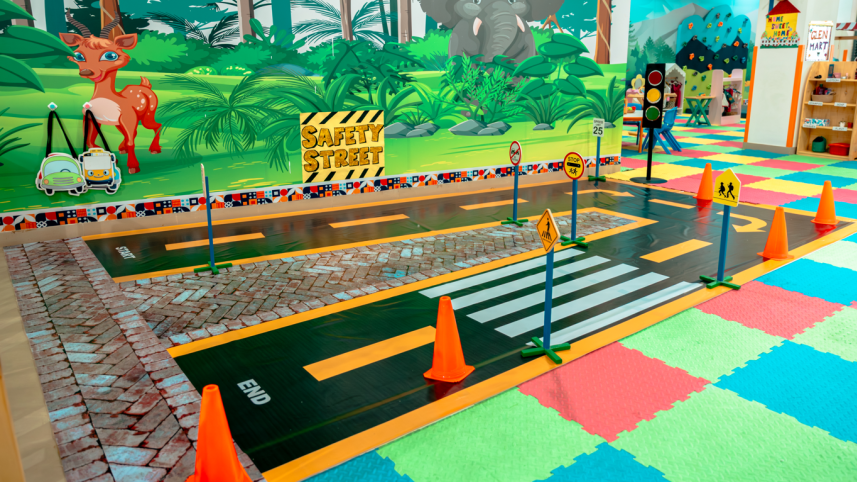Beyond textbooks: Simulation bringing real-life skills to classroom

Early education has always followed a very rigid, structured style in Bangladesh. Children here mostly learn through rote memorisation and repetition. While this system may be successful in helping children remember things, it hardly helps in building important life skills, such as emotional intelligence or critical thinking. This is why all over the world, schools are moving towards a more interactive and simulation-based learning environment. Understanding this, many schools in Bangladesh have started to follow this shift as well.
In simple words, simulation-based or experience-based learning means learning by doing. Through this, children get to practice real-life scenarios and make decisions in a controlled environment, which helps in creating a connection between theory and practice. Instead of only studying and memorising textbooks, students get to take part in everyday activities that help them prepare for the world out there. This type of learning helps them in every way, whether it's socially, emotionally, or practically.
In Bangladesh, schools like Glenrich International School are bringing this change in their learning environment by introducing various learning stations. The school follows the Cambridge International Curriculum, which puts great importance on exploration, play-based, and inquiry-based learning. Following the curriculum's philosophy, the creative learning stations are introduced so that students can step into different roles, such as being a doctor or an artist, or a firefighter. The idea is simple – making learning fun while also teaching important life skills.
These learning stations can be of many types. Each station offers a different life experience. For example, there are stations resembling streets that teach children about road safety by letting them practice using footpaths, following traffic lights, and crossing the streets through zebra crossings. Then there are the clinic or hospital stations where children can play as doctors and nurses, teaching them empathy and caring for others. The 'fire stations' let them role-play as firefighters, where they have to use helmets, fire extinguishers, and other tools, teaching them bravery and teamwork.
Creativity is another important skill that children learn through these simulation-based learning stations. The art station has easels, paint, weaving looms, and activity boards. Children can use those and express their creativity and imagination. Similarly, the music station lets the children express themselves through music. Children can try out different musical instruments and explore rhythms and tunes.
There are also stations that are inspired by everyday life. At the 'shopping mart', children learn about shopping for groceries, handling money, and using weight meters. Through the kitchen station, children practice cooking and cleaning – gaining valuable life skills. By tending to their 'bedroom' station, children learn about tidiness, self-care, and independence.
The thing about this style of learning is that it's not only about having fun. Together, these stations reflect a broader change in our education system. The education system, which was once so focused on the archaic methods of learning, is now more focused on a skill-based and hands-on learning environment.
Our children are our future. To be the leaders of tomorrow, they need qualities other than just academic knowledge. Through these role-playing activities, they can actually acquire crucial life skills. By moving towards a more experience-based learning environment, early childhood education nowadays is becoming less about repetition and more about preparing the young learners to thrive in the complex and interconnected world of tomorrow.
The author is the Head of Pre-Primary at Glenrich International School, Satarkul.
 For all latest news, follow The Daily Star's Google News channel.
For all latest news, follow The Daily Star's Google News channel.
Comments